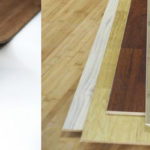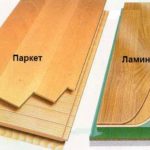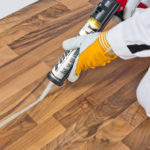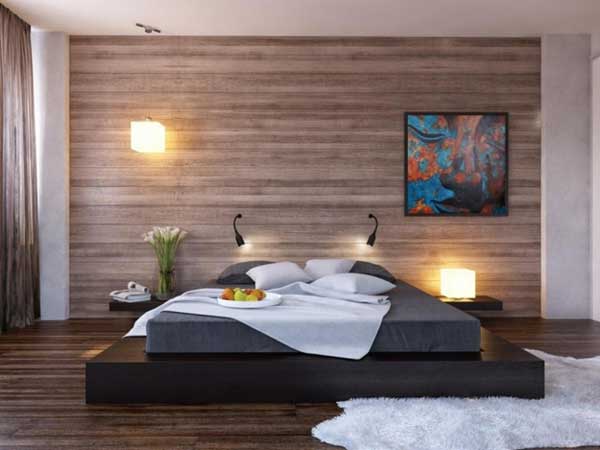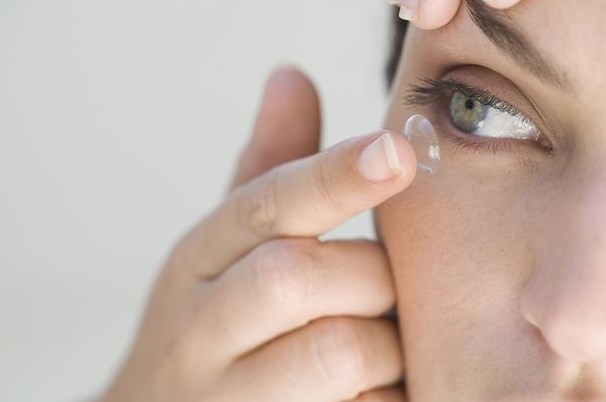What is laminated parquet
Since the 90s of the last century, laminated parquet, commonly referred to simply as laminate, has become widespread. Its popularity is due to its comparative low cost, ease of installation and unpretentiousness. It has become a good substitute for linoleum, natural parquet, carpets and plank floors. The main material for laminate is pressed paper, wood waste, and synthetic resins. Externally, the pattern on the surface of the parquet quite accurately imitates the texture of valuable wood.
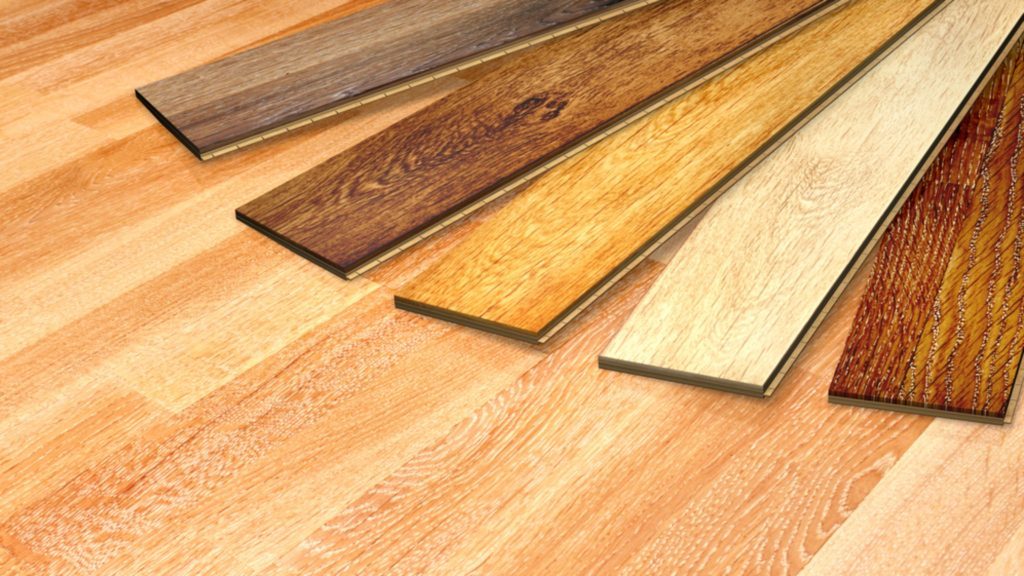
The content of the article
General concept
Laminated parquet is made in several layers, usually four:
- The top layer plays the role of a protective coating and is made from melamine with the addition of rosin, antiseptics and paraffin. Depending on which strength category the product belongs to, additives in the resin may contain corundum or powdered aluminum. This composition gives the parquet strength and abrasion resistance.
- A decorative layer consisting of a thin paper sheet with a high-quality image of wood texture or some other image applied to it, for example, an imitation of marble or granite. Good quality laminate, in addition to mechanical strength, is also resistant to ultraviolet radiation and chemical compounds.
- The base is a layer of pressed paper or woodworking waste impregnated with synthetic resins.Due to this layer, the product acquires volume, since it is the thickest. The base has mechanical strength, but without a top protective layer it is not resistant to moisture and environmental influences. The connecting lock for joining the panels is made in this layer. When choosing parquet, you should pay attention to what the base is made of - pressed cardboard is less resistant to mechanical damage and moisture than wood waste.
- The stabilizing layer is a moisture-resistant elastic substrate designed for sound insulation and preventing moisture from entering the laminate from the concrete floor, especially on the first floors. It also performs shock-absorbing functions, softening the mechanical impact on the parquet during its operation.
Advantages of coverage
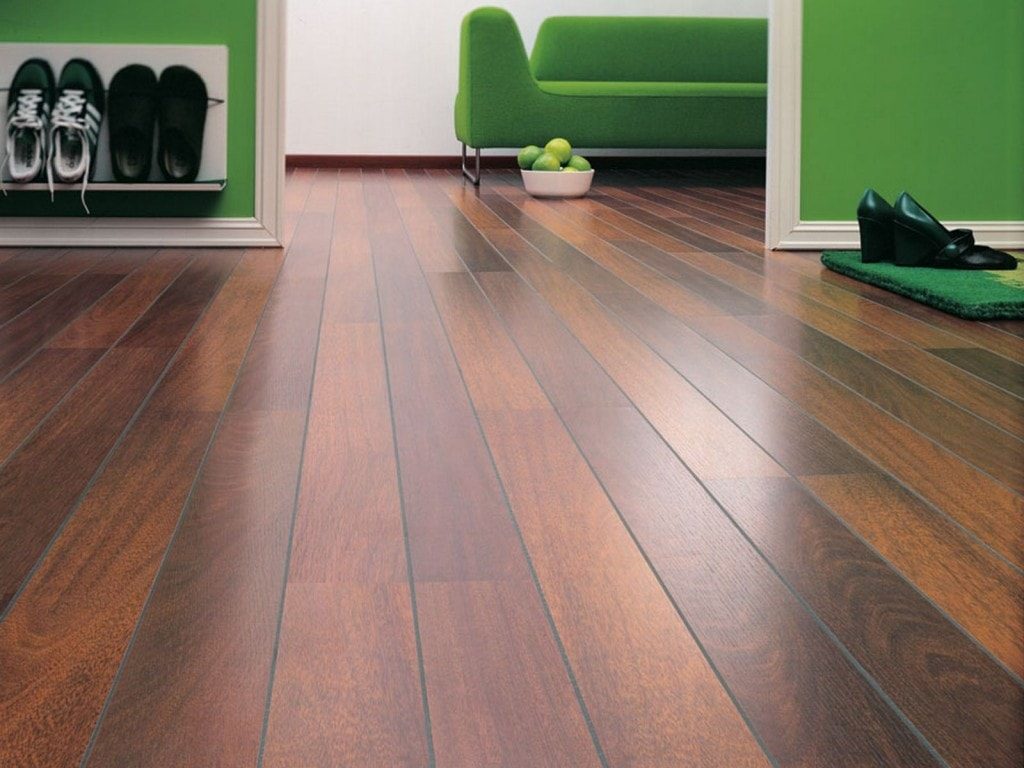
This type of material has proven itself well and has the following advantages:
- Has relatively good resistance to abrasion and scratches. Compared to varnished pine floors, laminate flooring is more difficult to scratch or dent than pine planks.
- Resistance to ultraviolet radiation and household chemicals - even relatively caustic compounds, including alcohol or solvent, will not “eat” the coating.
- Resistance to temperature changes, as well as to ignition due to the use of synthetic resins in the composition of the material.
- The product is relatively environmentally friendly, since about 80% of the composition of the panel base is wood or pressed cardboard.
- Low, compared to analogues made of pure wood or ceramic tiles, the cost of laminate.
- Unpretentiousness and no need for special care.
- Easy to install and replace damaged panels.
- A wide selection of different decorative textures and brands of laminate.
What are the disadvantages
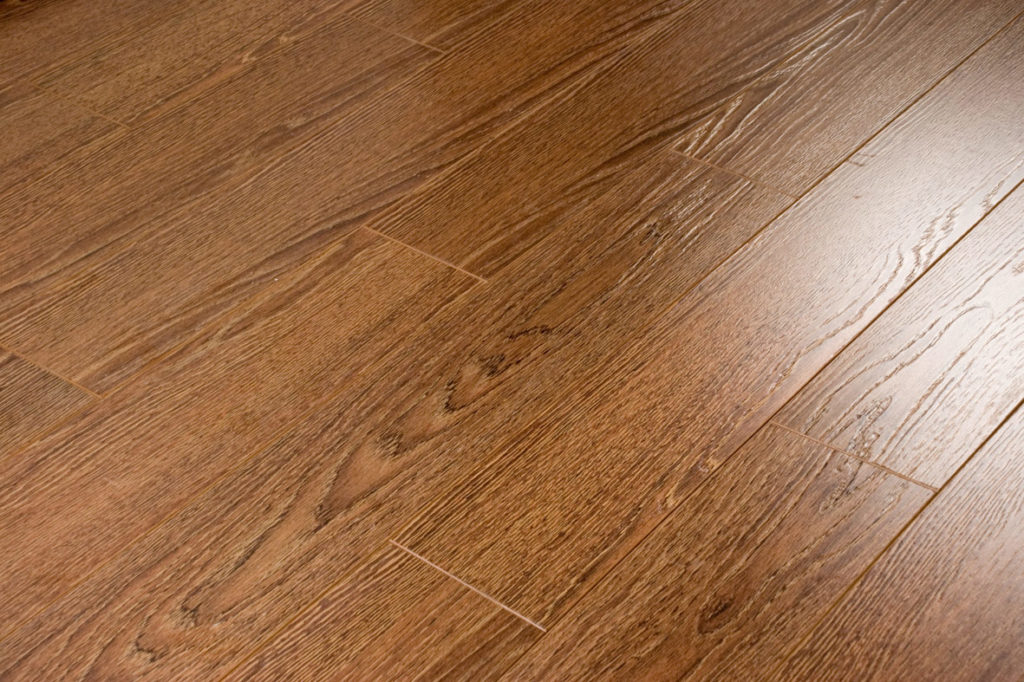
Any medal has two sides. There are also disadvantages to this type of material:
- In case of serious flooding of the floor, no substrate will save the panel from deformation.
- It is impossible to scrape, sand or varnish scratched panels - in fact, they cannot be restored.
- Weak heat and sound insulating properties.
Summary: to summarize, we can say that with all the advantages of the material, it is an imitation and not a replacement for real wood or stone. It cannot compete with the original in quality, and the use of laminate is justified by its low cost, ease of installation and replacement.

